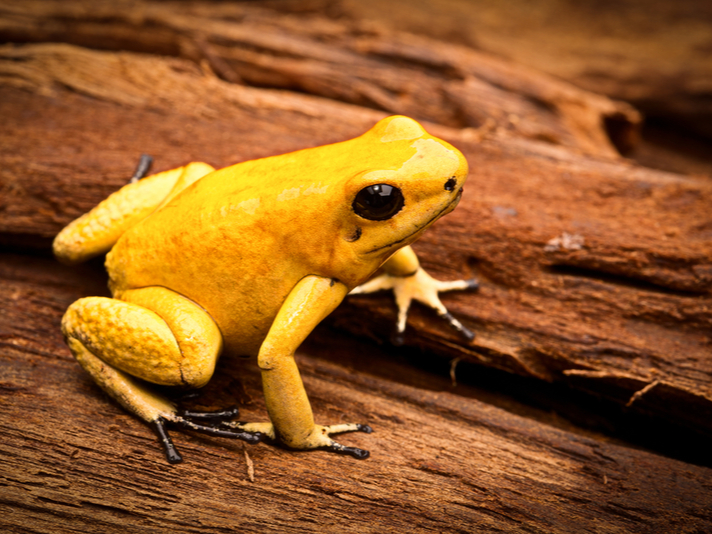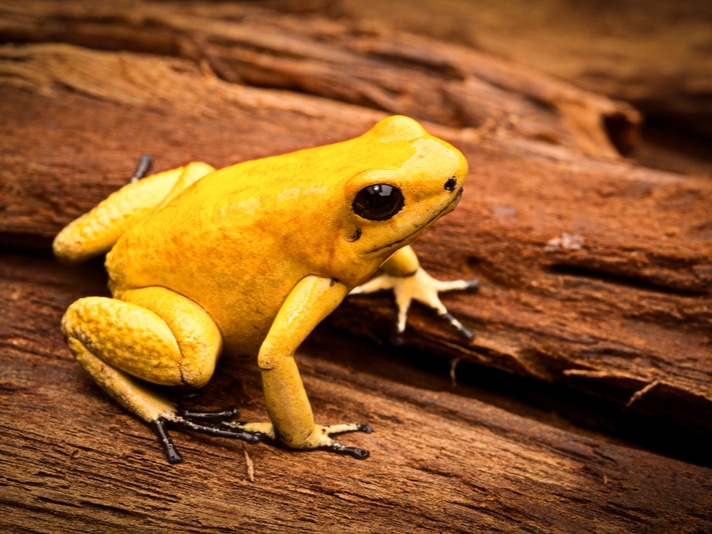The golden poison dart frog’s batrachotoxin could provide insight into future medicines.
Poison dart frogs are popular amphibians in the herp hobby. They are colorful and you can house them in beautiful recreations of their rainforest homes, complete with misting systems. While the captive bred specimens are no longer poisonous, those in the wild still pack a wallop. But did you know that even though the golden poison dart frog (Phyllobates terribilis) carries enough batrachotoxin (BTX) in its skin to kill more than 20,000 mice, they cannot poison themselves?

Dirk Ercken/Shutterstock
The golden poison dart frog’s batrachotoxin could provide insight into future medicines.
Researchers at the University of Texas, Austin have discovered that Phyllobates terribilis is resistant to its own neurotoxin. This is due to modified sodium channel proteins that block the toxin from disrupting nerve activity that cause heart disturbances, muscle spasms and death. The researchers determined that five amino acid mutations could be responsible for the frog’s auto-resistance to its own toxin.
Sho-Ya Wang, of the State University of New York at Albany, and colleagues at the University of Texas manipulated five amino acids in rat muscle sodium channels both individually and in combination and found a single mutation, changing an asparagine residue to threonine, created resistance to BTX without changing the gating properties (or the capability of something, such as a poison, to pass through), of the channel.
Read More
Researchers Create Synthetic Version of Golden Poison Dart Frog Poison
Golden Poison Dart Frog Care Sheet
“It appears that this native asparagine residue is an important part of the BTX receptor and could be a potential target site for novel pain therapeutics,” Wang told The Royal Society of Chemistry. She noted that she doesn’t know why the BTX binding is altered so drastically when switching from asparagine to threonine.
Like with other flora and fauna in the world’s tropical rain forests, the golden poison dart frog’s batrachotoxin could provide insight into future medicines. An abstract of the paper that discusses the golden poison dart frog's amino acid manipulations can be read on the Proceedings of the National Academy of Sciences website.


